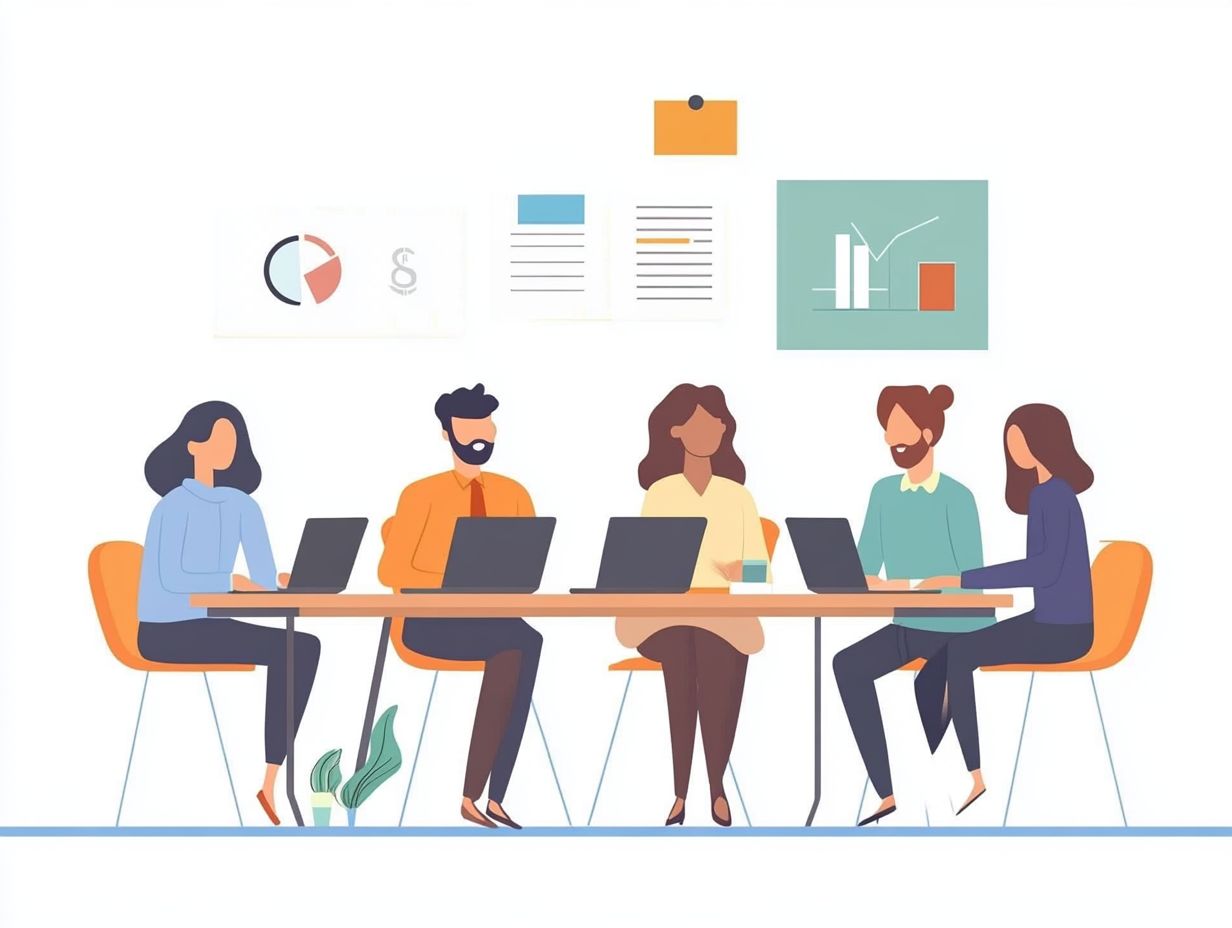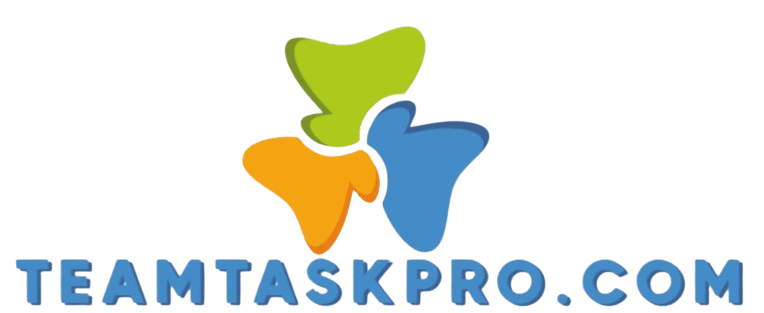how to identify key reporting stakeholders
In today s fast-paced business landscape, grasping the nuances of reporting stakeholders is essential for fostering effective communication and collaboration.
This article delves into the definition and significance of these stakeholders. It offers valuable insights on how to identify and prioritize them. Additionally, it covers strategies for engaging with stakeholders, managing their expectations, and measuring their satisfaction.
You’ll encounter common challenges along the way, and solutions will be provided to elevate your stakeholder reporting practices.
Discover how to strengthen your connections and achieve amazing success today!
Contents
- Key Takeaways:
- Understanding Reporting Stakeholders
- Identifying Key Reporting Stakeholders
- Engaging with Stakeholders
- Managing Stakeholder Expectations
- Measuring Stakeholder Satisfaction
- Addressing Challenges with Reporting Stakeholders
- Common Issues and How to Overcome Them
- Final Thoughts on Reporting Stakeholders
- Frequently Asked Questions
- What are key reporting stakeholders?
- Why is it important to identify key reporting stakeholders?
- How can I identify key reporting stakeholders?
- What criteria should I use to determine key reporting stakeholders?
- How often should I review my list of key reporting stakeholders?
- What are some common challenges in identifying key reporting stakeholders?
Key Takeaways:

Identify key stakeholders using methods like mapping and prioritization. This ensures all relevant parties are included.
Engage effectively through clear communication to manage expectations and meet needs.
Measure satisfaction by gathering feedback through surveys or focus groups. This helps improve future reporting processes.
Understanding Reporting Stakeholders
Understanding your reporting stakeholders is vital for any community initiative. It involves recognizing the diverse array of individuals involved, from community members and local government to influential community leaders, who all play a crucial role in the participatory process.
Doing a complete stakeholder analysis allows you to identify their interests, influence, and contributions. This ultimately makes sure communication is clear and everyone is involved in your community projects.
Identifying Key Reporting Stakeholders
Identifying key reporting stakeholders is essential for effective project management.
This practice helps community leaders and local governments pinpoint stakeholders, including community volunteers, who can shape economic prospects and housing initiatives.
Recognizing these individuals can make a substantial difference in the success of your projects.
Methods for Identifying Stakeholders
Effective methods for identifying stakeholders include stakeholder mapping, which allows you to recognize and categorize the various interests and contributions within your community context.
Mapping and engaging in collaborative brainstorming sessions helps harness diverse perspectives. These sessions provide participants with the opportunity to voice their insights and uncover hidden interests.
Conducting interviews further enriches this process, as one-on-one dialogues can reveal deeper motivations and concerns that might not emerge in group settings.
By gaining a comprehensive understanding of these stakeholder interests, you can tailor community initiatives to resonate more profoundly, enhancing engagement and support.
This targeted approach fosters a sense of ownership among stakeholders and ensures that initiatives address the community’s most pressing needs. This paves the way for sustainable development.
Prioritizing Stakeholders
Prioritizing stakeholders is an essential step in project management, allowing you to concentrate on interests that have a significant impact on the economic outcomes of community initiatives.
By assessing the influence and interest levels of each stakeholder, you can pinpoint which individuals or groups hold the power to sway project results.
This strategic evaluation streamlines communication and ensures that your resources are effectively directed toward engaging those whose needs closely align with your project goals.
As a result, prioritization cultivates stronger relationships with key players, fostering enhanced collaboration and significantly increasing the likelihood of project success.
When stakeholders feel valued and heard, their support becomes instrumental in overcoming challenges and achieving the results you desire.
Engaging with Stakeholders

Engaging with stakeholders is essential to the success of community initiatives.
By employing effective communication strategies, you can foster collaboration and gather invaluable feedback that will enhance your efforts and drive positive outcomes.
Effective Communication Strategies
Implementing effective communication strategies is essential for building good relationships with stakeholders. This ensures that the community context is taken into account while highlighting the benefits of participating in community initiatives.
By utilizing targeted newsletters that deliver tailored information to specific groups, you can keep stakeholders informed about relevant developments.
Public forums play a vital role in your strategy. They allow for open dialogue and feedback that can significantly enhance community engagement.
Harnessing technology for targeted messaging enables you to reach diverse populations, ensuring that everyone has access to critical information.
It s crucial to adapt these strategies thoughtfully to accommodate different demographics. This creates an inclusive atmosphere where all voices are heard and valued.
This approach turns communication into a lively conversation that everyone enjoys, transforming it from a mere one-way street into a collaborative effort that resonates with each stakeholder group.
Managing Stakeholder Expectations
Managing stakeholder expectations is crucial for fostering positive relationships and ensuring that their needs are effectively addressed.
By emphasizing the benefits of participation for everyone involved in community initiatives, you create a collaborative environment that not only meets individual expectations but also strengthens the overall initiative.
Strategies for Meeting Stakeholder Needs
Strategies for meeting stakeholder needs involve actively engaging with them to understand their contributions. Prioritizing community support in safety initiatives and other projects is vital.
You can achieve this through regular updates that keep stakeholders informed about progress and challenges. Encouraging their involvement in decision-making fosters a sense of ownership and brings diverse perspectives to the table.
Collaborative efforts, such as workshops and focus groups, can further enhance the relationship between stakeholders and project leaders. By demonstrating a commitment to listening and adapting based on feedback, you can build trust and foster stronger community ties.
Ultimately, recognizing and leveraging the value of stakeholders ensures that your initiatives are not only successful but also sustainable in the long run.
Measuring Stakeholder Satisfaction
Measuring stakeholder satisfaction is essential for evaluating the success of community initiatives. This process assesses effectiveness and facilitates ongoing improvement through valuable stakeholder feedback and conscientious resource conservation efforts.
Methods for Gathering Feedback

Effective methods for gathering feedback include tailored surveys, focus groups, and community forums. All of these are designed to respect community context while maximizing funding support for stakeholder engagement.
By employing these strategies, you can unlock invaluable insights into the needs and preferences of those you aim to serve. Engaging with stakeholders through these avenues cultivates a sense of ownership and establishes trust within the community.
The information you gather will form a critical foundation for your decision-making processes, enabling a more strategic allocation of resources.
Your feedback can make a real difference! Informed feedback can significantly elevate community initiatives, steering them toward more sustainable and effective outcomes. This collaborative approach enriches your understanding of diverse perspectives, ensuring that funding efforts align with the genuine priorities of the community.
Addressing Challenges with Reporting Stakeholders
Addressing challenges with reporting stakeholders is crucial for maintaining effective communication and navigating the common issues that emerge in community initiatives.
This often calls for innovative advocacy efforts to ensure that all voices are heard and aligned.
Common Issues and How to Overcome Them
Common challenges during stakeholder engagement often arise from misalignment in influence and interests. You can tackle these issues through strategic relationship mapping and involving community volunteers.
These challenges often manifest as power imbalances, where some stakeholders have more influence than others, leading to dissatisfaction and disengagement. A lack of trust can undermine collaboration, making it difficult to achieve shared goals.
To tackle these challenges, implement community engagement strategies that prioritize transparency and open communication. Utilize relationship mapping to pinpoint key influencers and ensure that a diverse range of voices is heard.
Community volunteers play a vital role in bridging gaps, fostering connections, and building trust among stakeholders. This ultimately enriches the engagement process.
Final Thoughts on Reporting Stakeholders
Effectively managing reporting stakeholders is essential for enhancing community support and integrating stakeholder analysis into your project planning and implementation.
This approach is key to your project’s success! By acknowledging the diverse interests and needs of those involved, you can cultivate stronger relationships and foster a sense of ownership among community members.
Proactive engagement paves the way for transparent communication and invites valuable feedback that is crucial for refining your project’s objectives.
When stakeholders feel heard, their contributions can significantly enhance the quality of community initiatives.
Sustainable growth emerges from continuous, meaningful involvement that prioritizes immediate project outcomes while establishing a foundation for future collaboration and resilience within the community.
Frequently Asked Questions
-
What are key reporting stakeholders?
Key reporting stakeholders are individuals or groups with a significant interest in the information shared by a company through its reports. They may include investors, customers, employees, government agencies, and the general public.
-
Why is it important to identify key reporting stakeholders?
Identifying key reporting stakeholders helps a company understand who it is accountable to and what information is important to them. This allows the company to tailor its reporting to meet stakeholder expectations in reporting effectively.
-
How can I identify key reporting stakeholders?
One way to identify key reporting stakeholders is to conduct a stakeholder analysis. This involves analyzing the different groups and individuals interested in the company’s operations and performance. Additionally, understanding the role of stakeholders in project reporting can be beneficial, as reviewing legal requirements and industry regulations can also help identify key stakeholders.
-
What criteria should I use to determine key reporting stakeholders?
Criteria to determine key reporting stakeholders include their level of influence on the company, interest in the company, and potential impact on success. Other factors include their relationship with the company and the information they may require.
-
How often should I review my list of key reporting stakeholders?
It is recommended to review the list of key reporting stakeholders regularly, such as annually or after significant changes in operations or the external environment. This ensures the list remains relevant and up-to-date.
-
What are some common challenges in identifying key reporting stakeholders?
Common challenges include determining the right stakeholders to include, ensuring their engagement, and managing conflicting interests. It’s essential to have a thorough and ongoing process to address these challenges effectively.
Are you ready to enhance your stakeholder relationships? Start your journey towards effective stakeholder engagement today!






